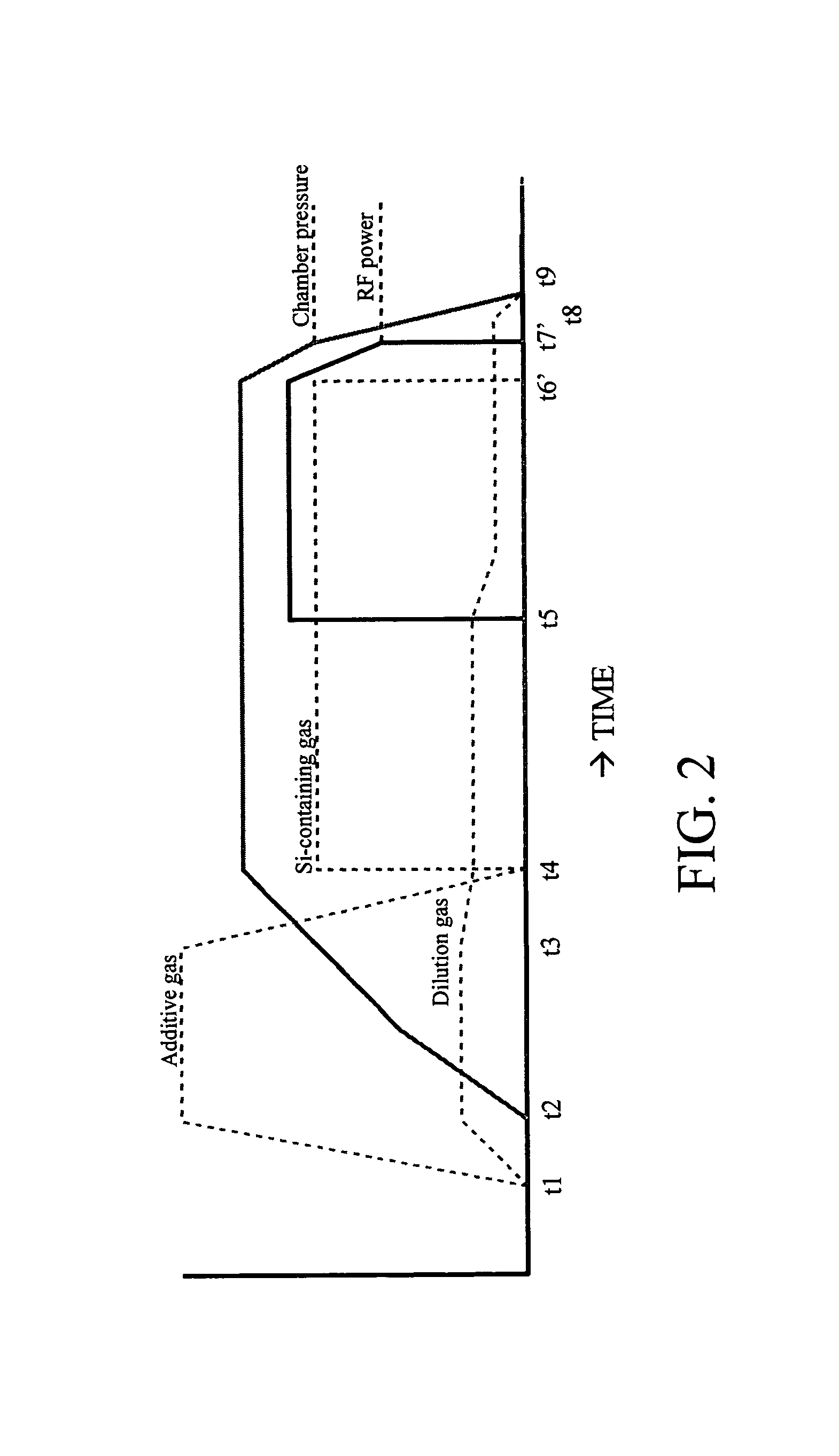Method of forming a thin film by plasma CVD of a silicon-containing source gas
a source gas and plasma technology, applied in the field of thin film forming, can solve the problems of low mechanical strength of films compared with teos oxide films, low mechanical strength of films, and high mechanical strength of films having spin-on type low-k films, so as to reduce plasma damage
- Summary
- Abstract
- Description
- Claims
- Application Information
AI Technical Summary
Benefits of technology
Problems solved by technology
Method used
Image
Examples
examples
[0057]Evaluation experiments of insulation films formed using the method according to embodiments of the present invention were conducted and the results are described below. Table 1 shows the measurement results of surface potential, interface state density and flat band voltage of silicon-containing insulation thin films (ULK films formed using 1,3 dimethoxytetramethyldisiloxane (DMOTMDS) as a source gas, O2 and isopropyl alcohol as additive gases and He as a dilution gas) formed using the comparative sequence and the sequence according to the above-mentioned embodiment of the present invention; Table 2 shows the measurement results of surface potential, interface state density and flat band voltage of silicon-containing insulation thin films (low-k films formed using dimethyldimethoxysilane as a source gas and He as a dilution gas) formed using the comparative sequence and the sequence according to the embodiment of the present invention.
[0058]
TABLE 1UniformityMax.Min.Mean(%)Rang...
PUM
| Property | Measurement | Unit |
|---|---|---|
| time | aaaaa | aaaaa |
| temperature | aaaaa | aaaaa |
| pressure | aaaaa | aaaaa |
Abstract
Description
Claims
Application Information
 Login to View More
Login to View More - R&D
- Intellectual Property
- Life Sciences
- Materials
- Tech Scout
- Unparalleled Data Quality
- Higher Quality Content
- 60% Fewer Hallucinations
Browse by: Latest US Patents, China's latest patents, Technical Efficacy Thesaurus, Application Domain, Technology Topic, Popular Technical Reports.
© 2025 PatSnap. All rights reserved.Legal|Privacy policy|Modern Slavery Act Transparency Statement|Sitemap|About US| Contact US: help@patsnap.com



